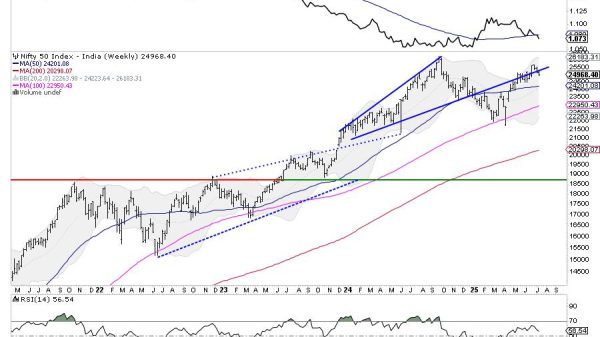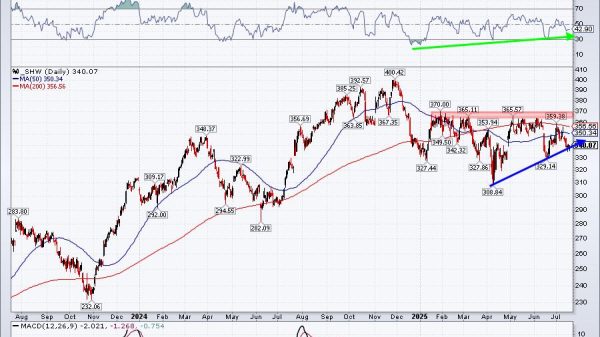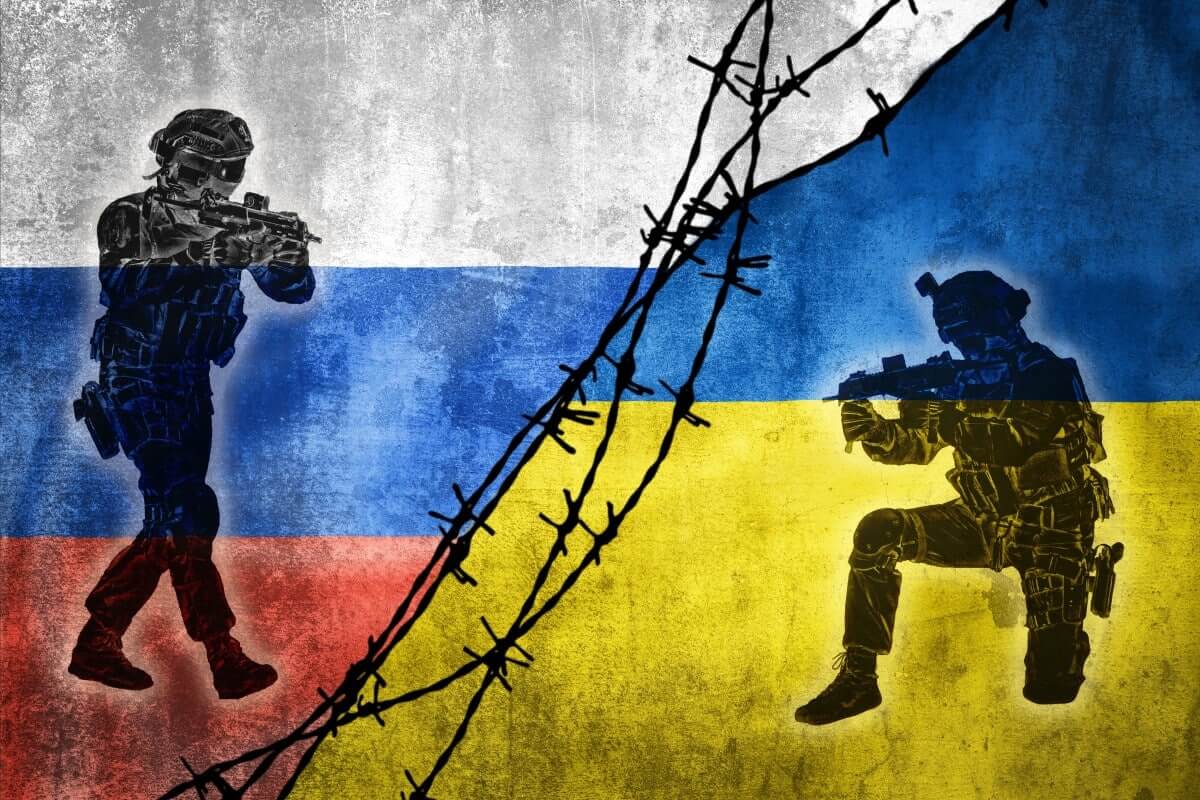Ukraine War: Worldwide Economic Repercussions
Russia’s invasion of Ukraine has plunged millions into poverty and severely harmed Ukraine’s economy. Sanctions against Russia have strained its economy, yet the conflict rages on. This war has triggered widespread financial turmoil and personal hardship across the globe, reshaping economic landscapes in ways that could have lasting repercussions.
Ukraine’s Economy Shrinks by 30-35% in War’s First Year
The Ukrainian economy has suffered its largest recession in history due to the war. Within the first year of conflict, Ukraine’s GDP plummeted by an astonishing 30-35%. While a modest recovery is projected with a 0.5% growth in 2023, the economic scars run deep, requiring monumental efforts for revival.
Ukraine’s Poverty Rate Jumps from 5.5% to 24.2%
Poverty rates in Ukraine have skyrocketed, with an alarming rise from 5.5% to 24.2% in 2022. An additional 7.1 million people have been thrust into poverty, a stark indicator of the war’s devastating social impact. This surge reflects not only the loss of income but also the collapse of economic stability for countless families.
Food Insecurity Plagues 1 in 3 Households in Ukraine
Ukraine, once a breadbasket, now faces severe food insecurity. The United Nations estimates that one in three Ukrainian households struggles with food insecurity, with the situation worsening in the war-torn east and south, where one in two households face hunger. The war has decimated agricultural productivity, exacerbating this crisis.
26,717 Civilian Casualties Reported by August 2023
The human cost of the conflict is staggering. As of August 2023, the UN reported 26,717 civilian casualties, including 9,511 deaths and 17,206 injuries. US officials estimate nearly half a million casualties across Ukraine and Russia combined, underscoring the war’s brutal toll on human life.
War Decimates Ukraine’s Agriculture, 45% Export Revenue Drop
Agriculture, a critical sector for Ukraine, has been decimated. The war has destroyed farms and displaced farmers, severely disrupting a sector that employed 14% of the population and generated 45% of export revenue pre-war. Although the Black Sea Grain Initiative temporarily boosted grain exports, Russia’s withdrawal from the agreement in July 2023 has once again stymied these vital exports.
6 Million Ukrainians Flee, 15% of Population Displaced
The conflict has forced over six million Ukrainians to flee their homeland, representing 15% of the pre-war population. This mass exodus has created a humanitarian crisis and resulted in a significant workforce shortage, further hampering economic recovery efforts.
Resilience Amid Ruin: Businesses Rebound in Ukraine
Despite the devastation, there are glimmers of resilience. By the end of 2022, the proportion of businesses on the brink of shutdown had fallen from 79% in March to 32%. Ukraine’s high level of digitalisation has played a crucial role in maintaining public services amid the chaos, offering a foundation for recovery.
For Ukraine to rebuild, substantial structural changes are necessary. The recovery will demand significant investment, international support, and comprehensive reforms to stabilise and revitalise the economy. The road ahead is long and fraught with challenges, but with concerted efforts, a brighter future is possible.
Russia’s GDP Drops 4.5% in 2022 Due to Sanctions
Sanctions and Economic Decline
International sanctions have inflicted severe damage on Russia’s economy. The World Bank revised its forecast for Russia’s GDP decline to 4.5% in 2022, coupled with a 13.9% inflation rate. Counterfactual analyses suggest sanctions have slashed GDP growth by 7-10%, illustrating the profound impact of economic isolation.
2,400 Billion Rouble Deficit: Russia’s Fiscal Strain Q1 2023
Russia’s federal budget deficit reached a staggering 2,400 billion roubles in the first quarter of 2023, highlighting the fiscal strain imposed by the war and sanctions. The economic shift has been stark, with manufacturing output decreasing by 1.7% year-over-year in early 2023 and car production plummeting to less than 25% of pre-invasion levels.
Russia’s Military Spending Jumps 50% in 2023
Russia has significantly increased its expenditure on military and internal security. In 2022, a third of the budget was allocated to these sectors, with a 50% increase in 2023. This surge in defence spending has come at the expense of critical areas like health, education, infrastructure, and industrial development, potentially undermining long-term economic stability.
Skilled Professionals Flee as Russia’s Economic Crisis Worsens
Moreover, Russia faces a potential ‘brain drain’ as skilled professionals flee the country, exacerbating the economic crisis. A currency crisis looms, and without peace, a deep recession seems inevitable. The economic isolation and internal challenges could stymie Russia’s growth for years to come.
Ukraine War Fuels Global Inflation, Living Costs Surge
The war has triggered a rise in production costs, leading to global inflation. Energy prices, in particular, have surged dramatically. Brent crude prices jumped by over 25% in the war’s first two weeks, while European gas prices soared by 580% year-over-year by March 2022. These increases have strained household budgets worldwide.
The conflict has intensified global food insecurity. In 2022, an estimated 258 million people faced food crises or acute food insecurity, a situation exacerbated by the disruption of Ukrainian agricultural exports. The war’s impact on global food supply chains has had far-reaching consequences, pushing millions more into hunger.
The war has also rattled financial markets. Firms with strong ties to Russia have seen substantial share price declines, with European countries experiencing the most significant losses. The uncertainty and economic disruptions caused by the conflict have heightened market volatility and risk.
Global Economic Challenges Worsen as War Drags On
The prolonged conflict promises deepening economic strife, with each passing day compounding the challenges faced by nations globally. As the war drags on, supply chain disruptions become more pronounced, affecting everything from food supplies to critical raw materials. The resulting scarcity and increased costs are driving inflation rates up, eroding purchasing power and leading to widespread economic instability. Developing nations, in particular, are hit hard, as they often rely heavily on affordable imports for sustenance and economic stability. Additionally, the energy sector remains volatile, with fluctuating prices causing budgetary strains on households and industries alike. The geopolitical tensions have also led to increased defence spending at the expense of social and economic development programs, further exacerbating the situation. Other countries feel these ripple effects, far beyond Ukraine and Russia, affecting economies and livelihoods around the world, creating an interlinked web of economic distress that could take years to unravel.
Russia’s invasion of Ukraine has set off a chain reaction of economic disruptions that have reshaped global markets, exacerbated poverty, and heightened food insecurity. Both Ukraine and Russia face significant economic challenges, with recovery dependent on structural reforms and international support. As the conflict drags on, the global community must brace for continued economic turbulence, with long-term solutions hinging on the restoration of peace and stability in the region.
The post Ukraine War: Worldwide Economic Repercussions appeared first on FinanceBrokerage.
























